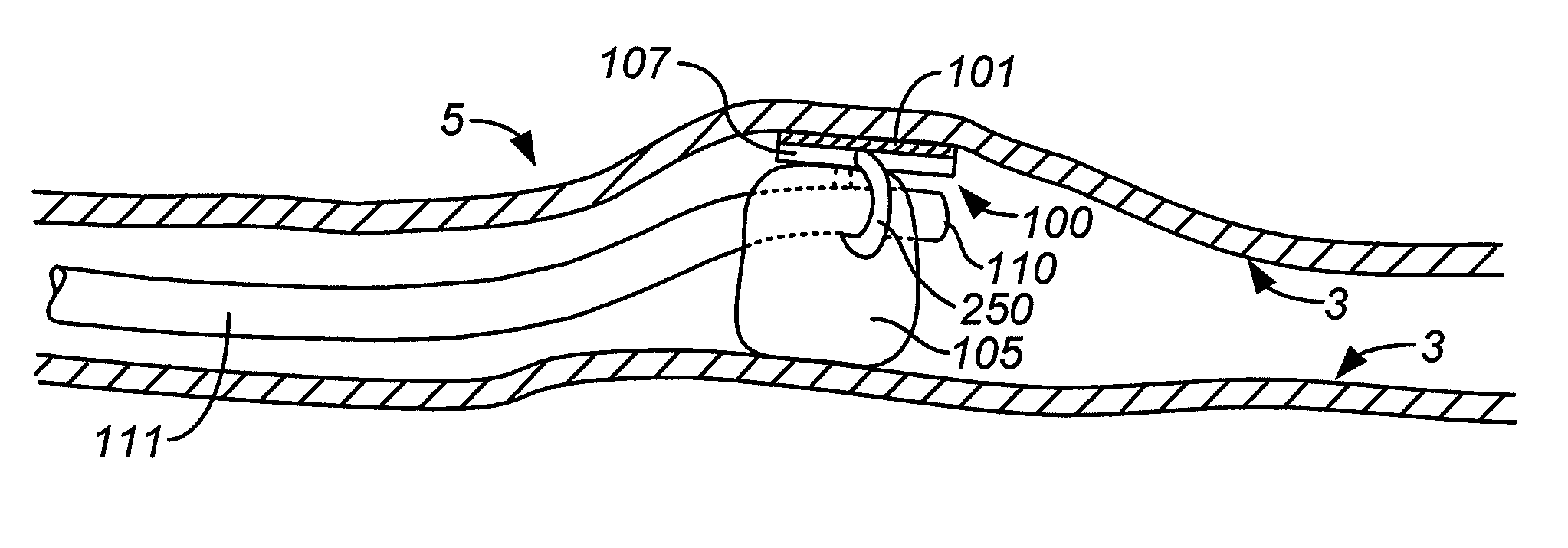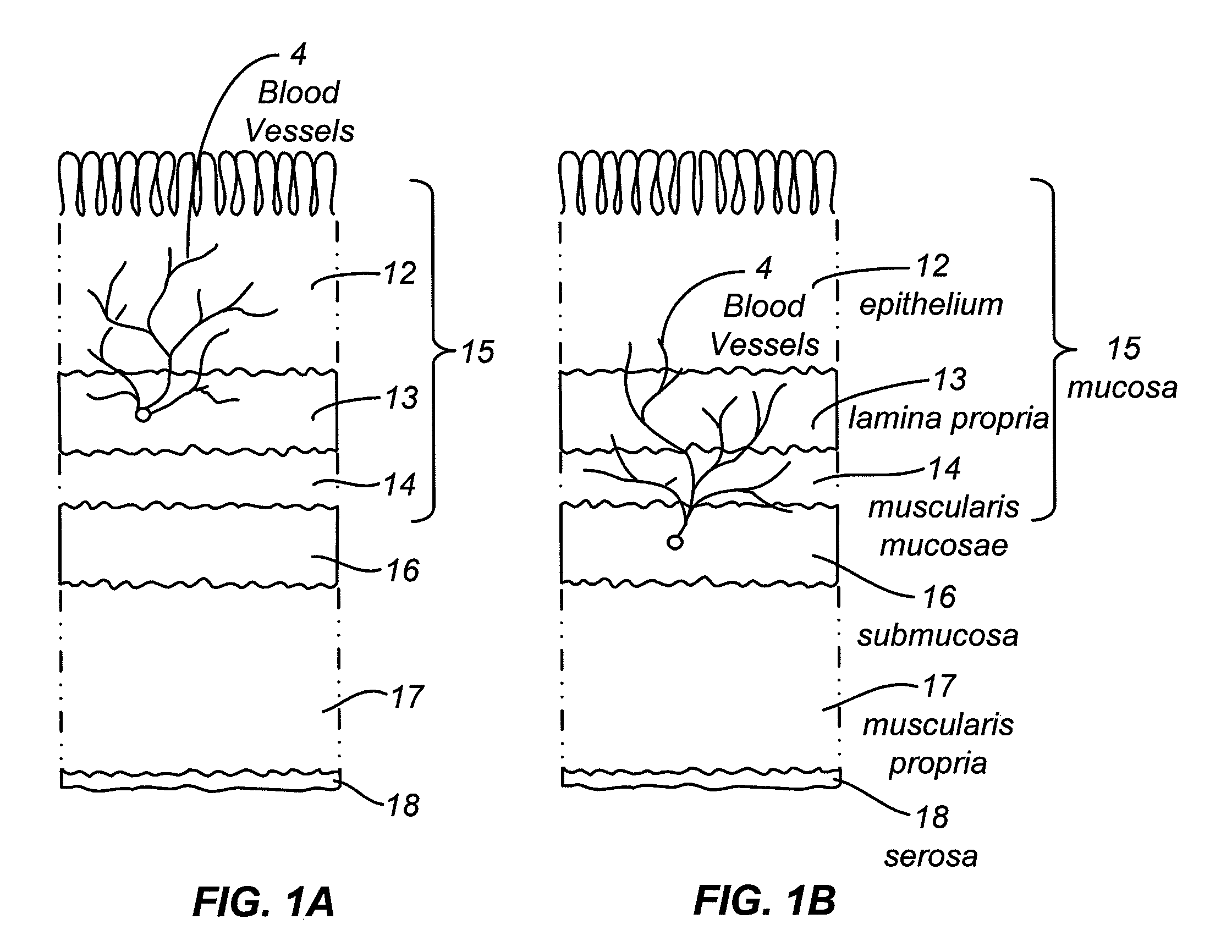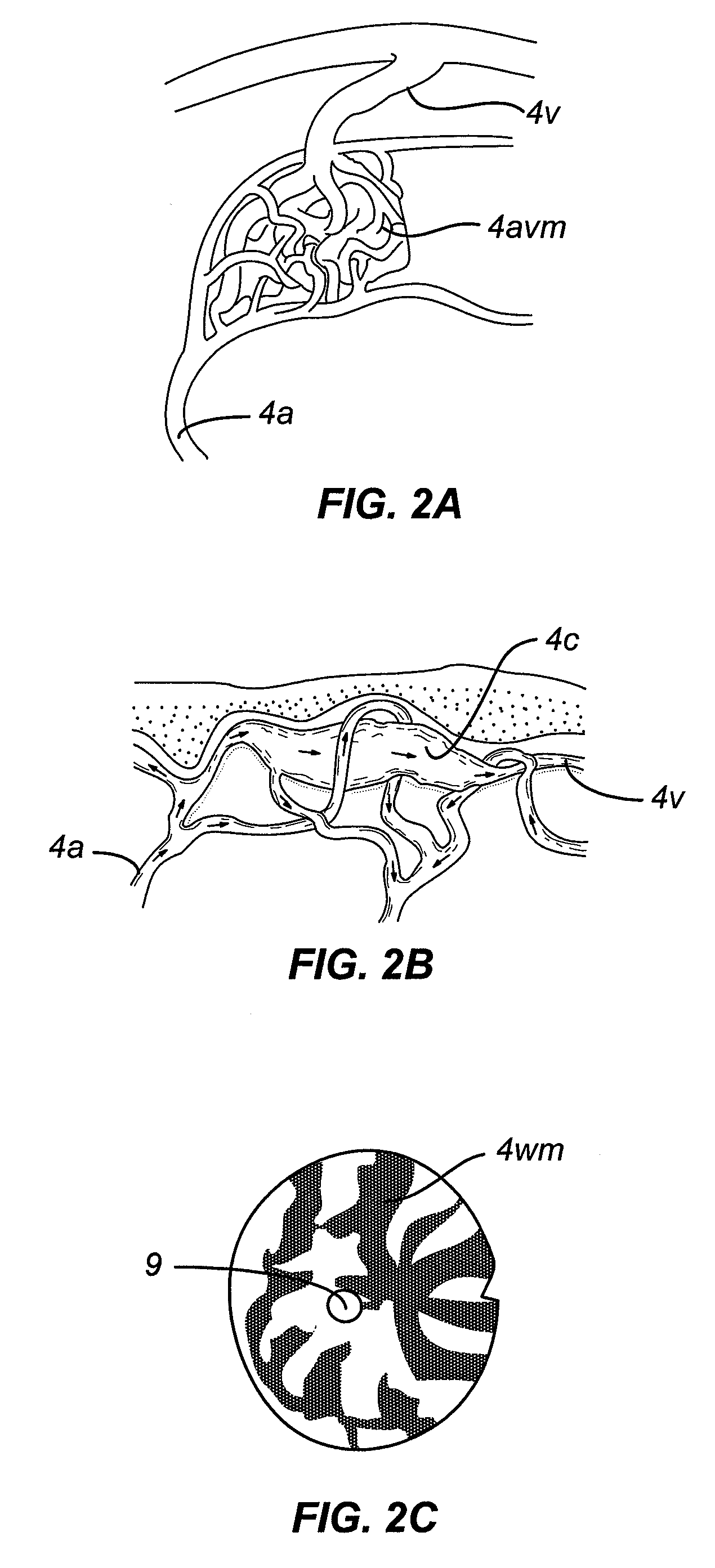Ablation in the gastrointestinal tract to achieve hemostasis and eradicate lesions with a propensity for bleeding
a technology of gastrointestinal tract and ablation, which is applied in the field of endoscopic therapy devices and methods, can solve the problems of high failure rate and achieve the effects of reducing blood flow, uniform level of ablation, and high failure ra
- Summary
- Abstract
- Description
- Claims
- Application Information
AI Technical Summary
Benefits of technology
Problems solved by technology
Method used
Image
Examples
Embodiment Construction
[0108]The use of ablation technologies that make use of a fully circumferential and partially-circumferential ablative structure, some in combination with expandable balloons to position the ablative structure against target tissue has been described in described in US Patents and US Patent Applications. Devices and methods that make use a partially-circumferential ablative structure include the following U.S. patent application Ser. Nos. 11 / 286,257, 11 / 286,444, and 11 / 275,244. Devices and methods that make use a fully-circumferential ablative structure have been described in U.S. Pat. Nos. 6,551,310, and 7,150,745 and in U.S. patent application Ser. No. 11 / 557,445, Ser. No. 10 / 370,645, Ser. No. 10 / 416,923, Ser. No. 11 / 420,722, Ser. No. 11 / 420,719, Ser. No. 11 / 420,714, Ser. No. 11 / 420,712, Ser. No. 11 / 469,816 (Shadduck) and U.S. Pat. No. 6,872,206.
[0109]The devices and methods may provide an immediate hemostatic effect, or they may remove or alter a lesion that has a propensity to b...
PUM
 Login to View More
Login to View More Abstract
Description
Claims
Application Information
 Login to View More
Login to View More - R&D
- Intellectual Property
- Life Sciences
- Materials
- Tech Scout
- Unparalleled Data Quality
- Higher Quality Content
- 60% Fewer Hallucinations
Browse by: Latest US Patents, China's latest patents, Technical Efficacy Thesaurus, Application Domain, Technology Topic, Popular Technical Reports.
© 2025 PatSnap. All rights reserved.Legal|Privacy policy|Modern Slavery Act Transparency Statement|Sitemap|About US| Contact US: help@patsnap.com



